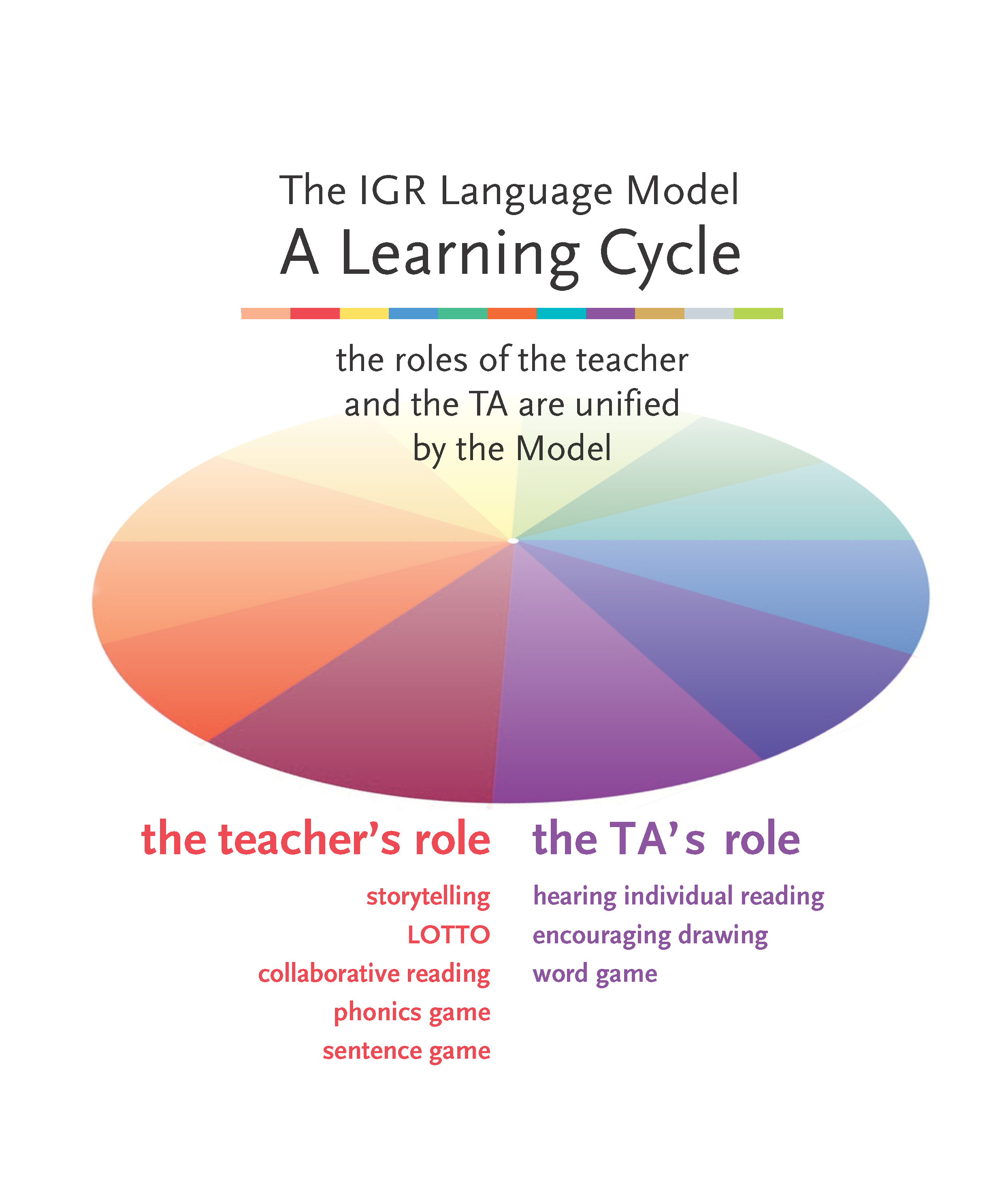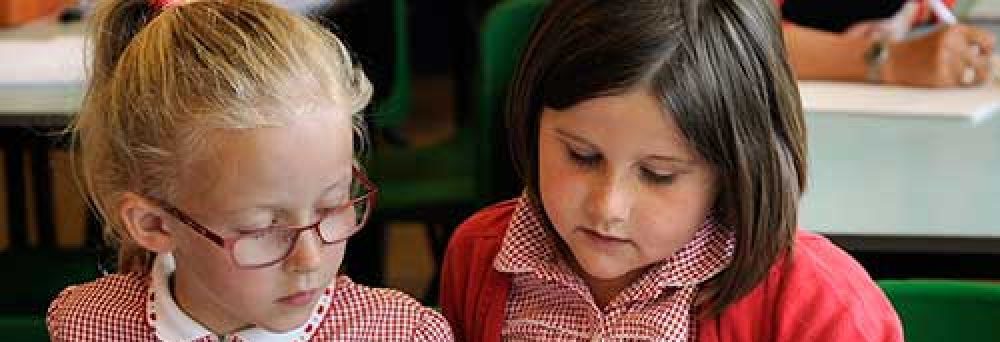Project Summary
The aim of this project is to evaluate systematically at a national scale the Integrated Group Reading (IGR) programme. The evaluation will start in September 2015 and run until August 2017.
The programme is designed as an early intervention taught by class teachers for groups of 4 children in Years 2 and 3 who are delayed in reading. IGR integrates diverse current professional knowledge about literacy teaching using specially developed high quality materials (reading books and story-specific games). It is taught during the existing small group organisation of lessons as part of a class-wide model, with all pupils being in groups receiving teacher attention over a period of a week, supported by a teaching assistant.
Further details about the IGR programme in action:
The figure below summarises what is involved in the IGR programme.

Bottom right: shows the class divided into 6 teaching groups according to guided reading practices (this can vary according class size etc.). One of these groups is the IGR group of 4 pupils identified as in need of focused teaching.
Top right: This programme timetable shows the allocation of teacher and TA time during a typical week of the programme ( see Classroom Organisation for possible variations to this).
Bottom left: shows the interaction between the class teacher during IGR teaching with the 4 identified pupils (C1 to C4).
Top left: refers to the materials and methodology that inform the teachers’ use of IGR during these group teaching sessions.
IGR MATERIALS
Teachers are provided with enough sets of books and accompanying story-specific games (IGR learning Packs) for a minimum intervention of 26 weeks. These materials are all story and/or rhyme-based and have been designed and produced to exemplify the Methodology.
IGR METHODOLOGY
The IGR approach to small group reading instruction is different and distinct from that of Guided Reading. It has a number of principal distinguishing features:
- Every book is the hub of a complete learning cycle.
- The IGR learning cycle covers 6 linguistic levels.
- In every IGR lesson a complete story is read and five linguistic levels are covered.
- Story specific games ensure high levels of engagement and the development of memory.
- Story introduction is direct – as story telling – rather than metacognitive.
- Memory / comprehension checking is light touch and unobtrusive.
- In IGR the principal aim and focus is the practice of reading itself.
- There is no silent reading – in IGR children learn to read aloud together and individually in a collaborative way.
- The work of the TA is an integral part of the IGR language model.
- IGR methodology requires a constancy of lesson structure and adherence to programme detail.
THE IGR LEARNING CYCLE

